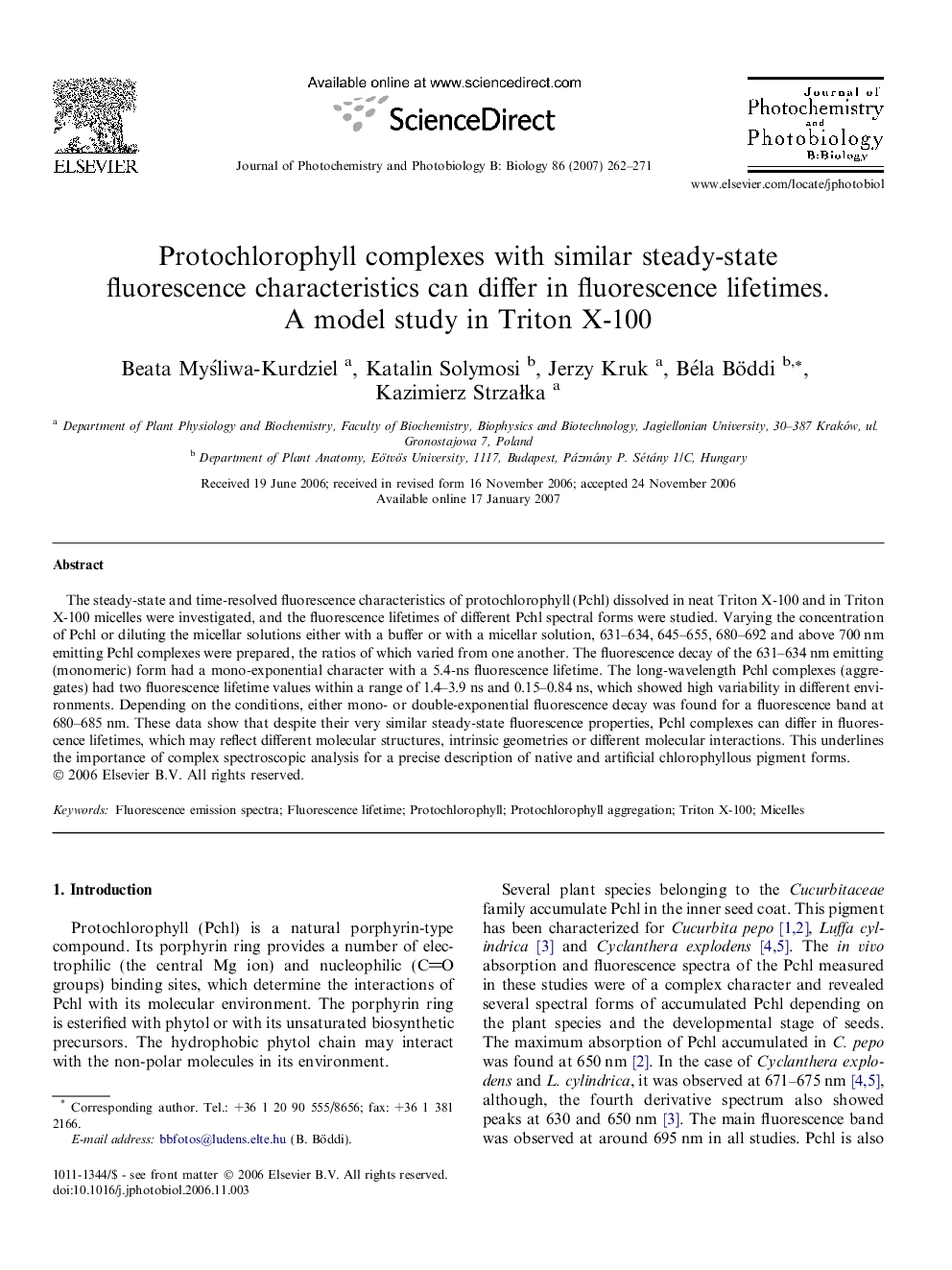| Article ID | Journal | Published Year | Pages | File Type |
|---|---|---|---|---|
| 31036 | Journal of Photochemistry and Photobiology B: Biology | 2007 | 10 Pages |
The steady-state and time-resolved fluorescence characteristics of protochlorophyll (Pchl) dissolved in neat Triton X-100 and in Triton X-100 micelles were investigated, and the fluorescence lifetimes of different Pchl spectral forms were studied. Varying the concentration of Pchl or diluting the micellar solutions either with a buffer or with a micellar solution, 631–634, 645–655, 680–692 and above 700 nm emitting Pchl complexes were prepared, the ratios of which varied from one another. The fluorescence decay of the 631–634 nm emitting (monomeric) form had a mono-exponential character with a 5.4-ns fluorescence lifetime. The long-wavelength Pchl complexes (aggregates) had two fluorescence lifetime values within a range of 1.4–3.9 ns and 0.15–0.84 ns, which showed high variability in different environments. Depending on the conditions, either mono- or double-exponential fluorescence decay was found for a fluorescence band at 680–685 nm. These data show that despite their very similar steady-state fluorescence properties, Pchl complexes can differ in fluorescence lifetimes, which may reflect different molecular structures, intrinsic geometries or different molecular interactions. This underlines the importance of complex spectroscopic analysis for a precise description of native and artificial chlorophyllous pigment forms.
